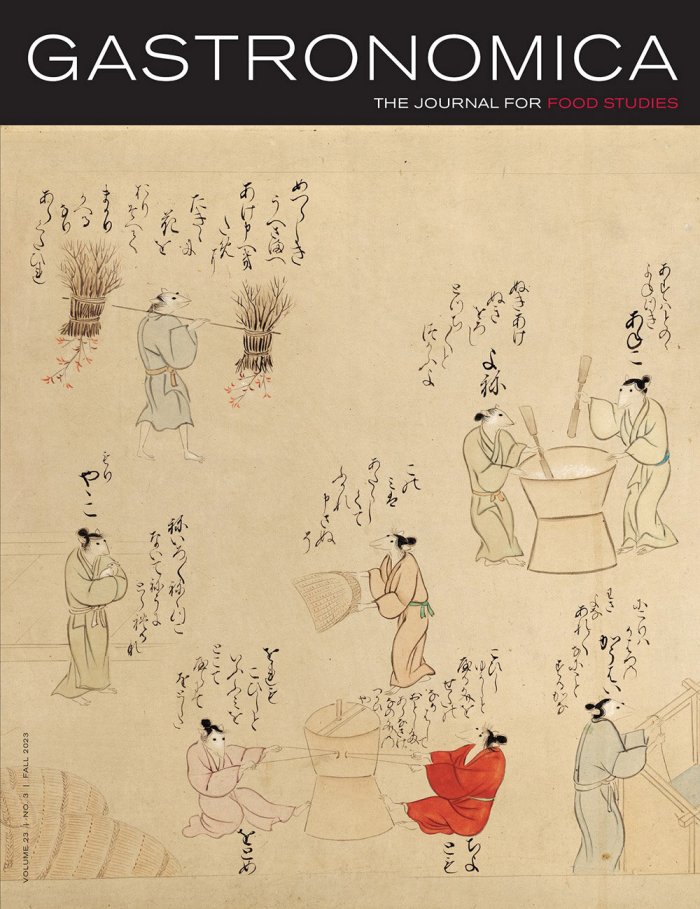Jan Bartek – AncientPages.com – Rats in the kitchen. Typically that implies issues with cleanliness and safety. But in medieval Japan, having rats in the kitchen could suggest an entirely different meaning.
Such is the case with “The Illustrated Rat’s Tale” (Nezumi no sōshi emaki), an anonymous Japanese picture scroll created between 1550 and 1650 that depicts a rat wedding banquet.

Credit: Gastronomica: The Journal of Food and Culture (2023). DOI: 10.1525/gfc.2023.23.3.74
“There were quite a few stories written in medieval and early modern Japan about rats, and many of these became picture scrolls combining illustrations with text,” said Eric Rath, professor of history at the University of Kansas. “But what sets this example apart are the detailed scenes of cooking. There is only one other picture scroll that depicts cooking scenes for this period, so as a food historian, I wanted to see what I could learn from this rat story.”
The result is his article “What Rats Reveal about Cooking in Late Medieval Japan.” It examines how this artwork supplies an important source for understanding the staff and procedures for food preparation during this era and how the gendered and status-conscious division of labor reflected how food played a powerful role in the representation of authority. It appears as the cover story for the fall 2023 edition of Gastronomica: The Journal of Food and Culture.
The creators of “The Illustrated Rat’s Tale” show the rodents taking on human roles, so the scroll can also be read as a representation of Japanese society.
“In other words, the way the artists depicted rats preparing for a banquet offers insights into the division of labor and workflow of kitchens in elite households in the 16th century, an age with very few other visual sources. We learn that specially trained male (rat) chefs handled prestigious tasks like carving meats and female workers performed manual labor such as milling the rice outside,” Rath said.
The professor first learned there was a copy of this scroll in the New York Public Library. He then secured a grant from the Culinary Historians of New York that allowed him to study the item in person.
In addition to general commentaries on class and society, the scroll makes some specific ones as well.
“One of the leading cultural influencers of the late 1500s was the tea master Sen no Rikyu, whom many claimed invented Japan’s traditions of the tea ceremony. He makes a cameo appearance as a rat in the picture scroll. Also it seems that rats were big fans of sake drinking as much as humans,” Rath said.
There’s no specific connection between rats and cooking in modern Japan, he said.
“No one likes to see a rat in the kitchen today, and the same was true in medieval Japan. Rats are consumers of food, and many of the stories about them are about their appeтιтes. In the picture scroll I studied, some of the rat characters had names like Tobei the Bean-lover, Bad Taro the Glutton and Kuranojo the Rice-Chewer,” Rath said.
However, “The Illustrated Rat’s Tale” turns the idea of rats as consumers on its head by making them into producers because it is the story of a rat lord who wants to marry a human being. Thus he needs a fancy wedding banquet in the style of a shogun.
Rath said, “The wedding required an enormous and complex feast with specialty rat chefs, the medieval Japanese equivalent of the rat in the film “Ratatouille.'”
A 22-year veteran of KU, Rath teaches a course on the history of sushi. His book “Oishii: The History of Sushi” (Reaktion Books/University of Chicago Press, 2021) offers the first comprehensive chronicle of sushi written in English. His previous article for Gastronomica тιтled “Sake Journal (Goshu no nikki): Japan’s Oldest Guide to Brewing” provides the first English translation of the earliest Japanese manual for brewing sake.
As for rats, this is the first time Rath has written about them. But he has enjoyed their company at home.
“My daughter received two ‘male’ rats from her fifth grade teacher, and we learned one of them was actually female, so we had a family of pet rats soon led by Mama-Razzi and Papa-Razzi. They proved to be good pets,” he said.
Besides the insights the scroll imparts regarding foodways in late medieval Japan, Rath’s article shows the interdisciplinary nature of food history.
He said, “It’s a discipline where scholars like me frequently poach ideas from other fields and use a range of sources in writing about the past.”
The study was published in the journal Gastronomica: The Journal of Food and Culture
Written by Conny Waters – AncientPages.com Staff Writer





